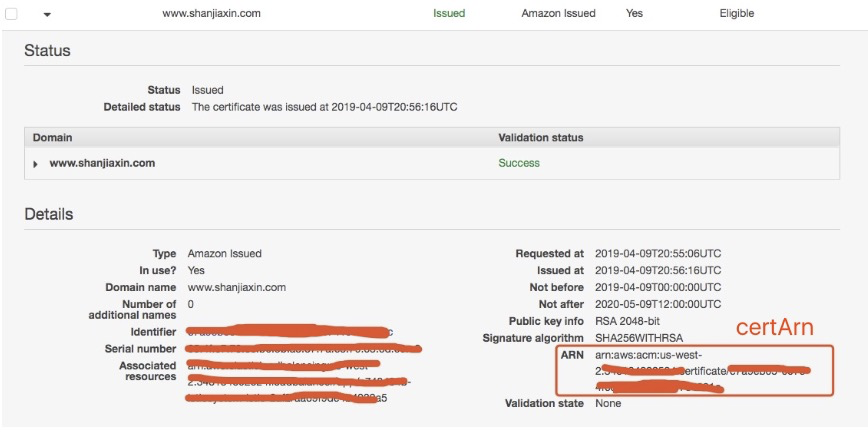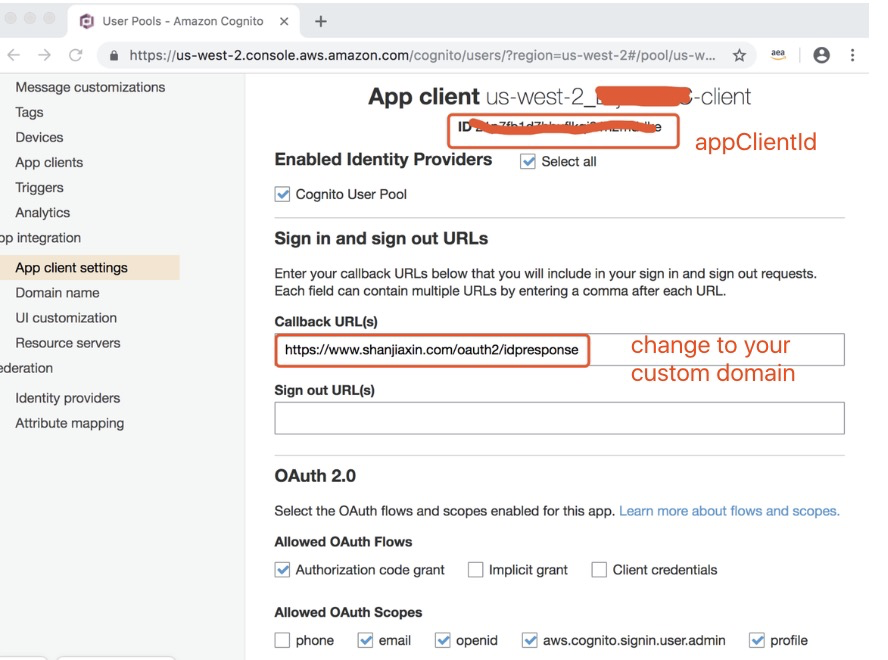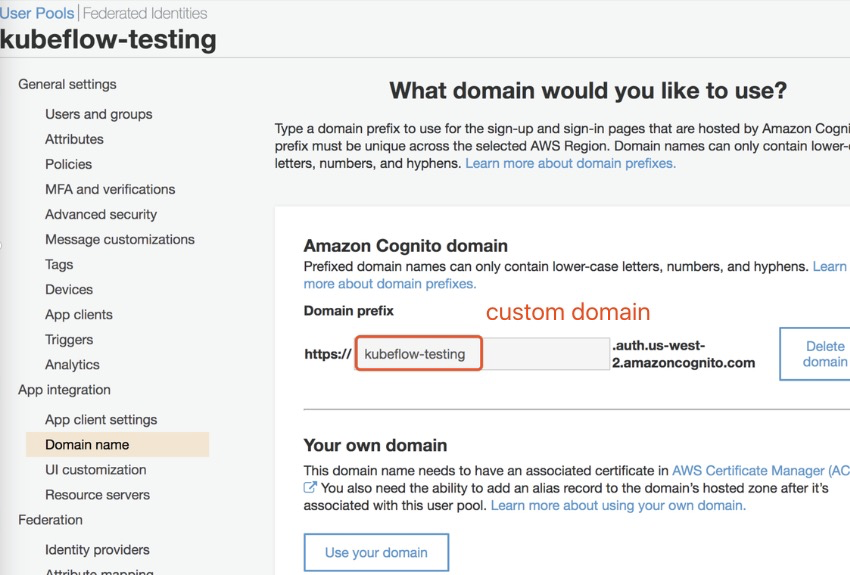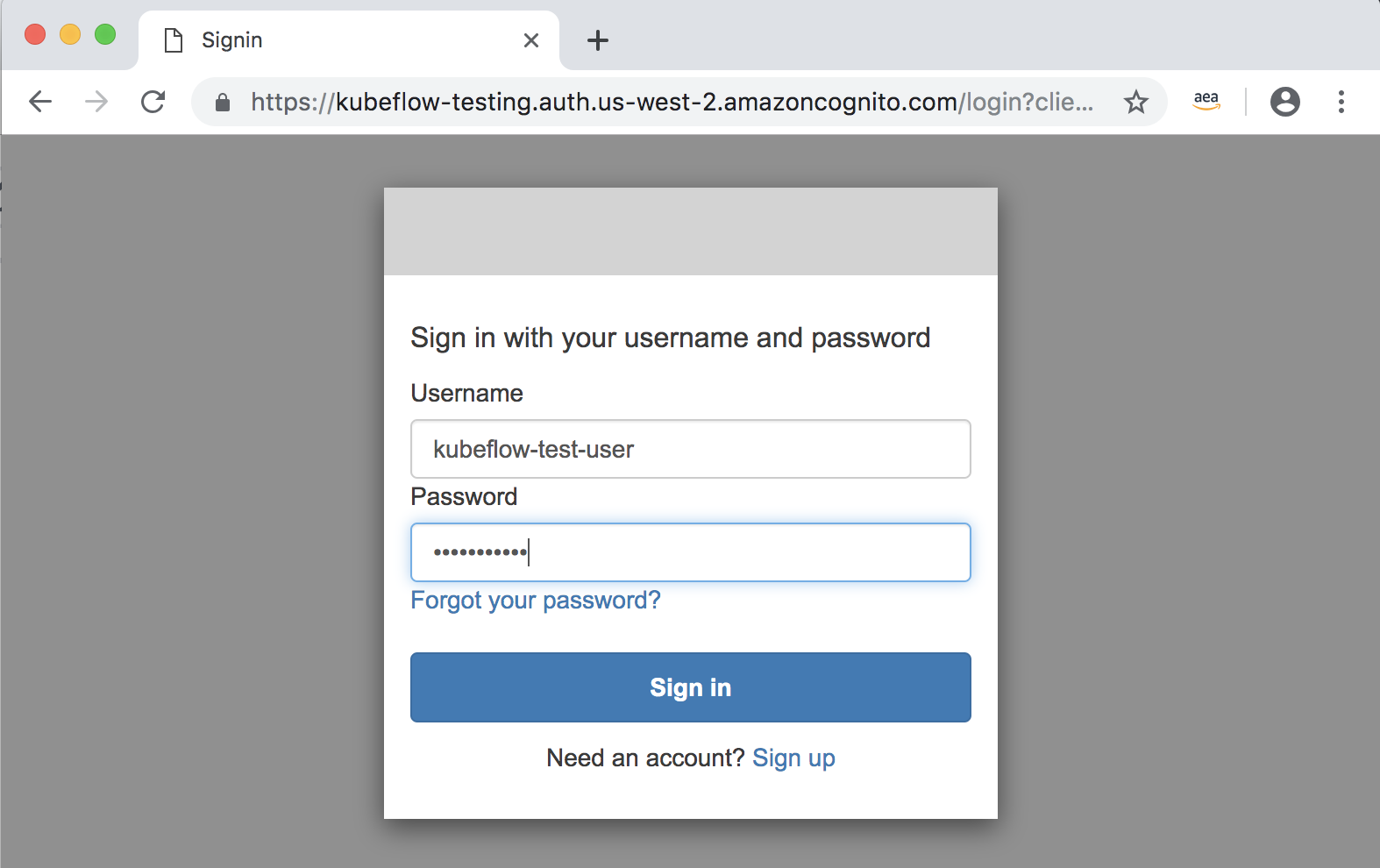Authentication and TLS Support
This section shows the how to add TLS support and create a user pool to authenticate users with your custom domain in Amazon Web Services (AWS).
Traffic Flow
External Traffic → [ Ingress → Istio ingress gateway → Istio virtual services ]
When you generate and apply kubernetes resources, an ingress is created to manage external traffic to Kubernetes services. The AWS Appliction Load Balancer(ALB) Ingress Controller will provision an Application Load balancer for that ingress. By default, TLS and authentication are not enabled at creation time.
In Kubeflow 0.6 release, community already move from Ambassador to Istio to manage internal traffic. In AWS solution, TLS, authentication,can be done at the ALB and and authorization can be done at Istio layer.
Enable TLS and Authentication
Right now, certificates for ALB public DNS names are not supported. Instead, you must prepare a custom domain. You can register your domain in Route53 or any domain provider such as GoDaddy.com.
AWS Certificate Manager is a service that lets you easily provision, manage, and deploy public and private Secure Sockets Layer/Transport Layer Security (SSL/TLS) certificates for use with AWS services and your internal connected resources.
To get TLS support from the ALB Ingress Controller, you need to follow this tutorial to request a certificate in AWS Certificate Manager. After successful validation, you will get a certificate ARN to use with the ALB Ingress Controller.

AWS Cognito lets you add user sign-up, sign-in, and access control to your web and mobile apps quickly and easily. Amazon Cognito scales to millions of users and supports sign-in with social identity providers, such as Facebook, Google, and Amazon, and enterprise identity providers via SAML 2.0.


In order to authenticate and manage users for Kubeflow, let’s create a user pool. You can follow these instructions here. Once a user pool created, we will have a UserPoolId, a Cognito Domain name, and a Cognito Pool Arn.
Before you generate all -V, please update Cognito spec in your Kubeflow
configuration file at ${CONFIG_FILE}, so that it looks like this:
plugins:
- name: aws
spec:
auth:
cognito:
cognitoUserPoolArn: arn:aws:cognito-idp:us-west-2:xxxxx:userpool/us-west-2_xxxxxx
cognitoAppClientId: xxxxxbxxxxxx
cognitoUserPoolDomain: your-user-pool
certArn: arn:aws:acm:us-west-2:xxxxx:certificate/xxxxxxxxxxxxx-xxxx
roles:
- eksctl-kubeflow-aws-nodegroup-ng-a2-NodeInstanceRole-xxxxx
region: us-west-2
After you finish the TLS and Authentication configuration, then you can run kfctl apply -V -f ${CONFIG_FILE}.
After your ingress DNS is ready, you need to create a CNAME in your DNS records.

Then you can visit https://www.shanjiaxin.com, which is a custom domain we use in this case, it will redirect you to an authentication page. We added a user kubeflow-test-user in the Cognito setting and we can use this user for the login service.


Feedback
Was this page helpful?
Glad to hear it! Please tell us how we can improve.
Sorry to hear that. Please tell us how we can improve.